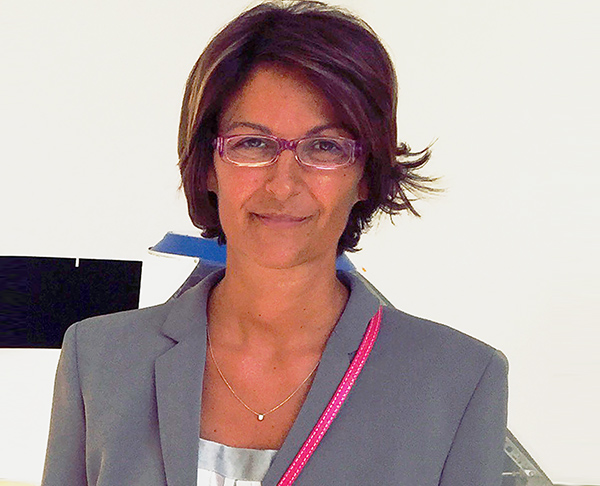Honors and Fellowships
2008-present Member of the Scientific Committee of the Italian Society of Astrobiology
2013-present Member of the Executive Council of European Astrobiology Network Association
2013-2015 Associated Partner of AstroMap: Roadmap for Astrobiology
2014-2018 Member of the Management Committee EU Cost Action Life-Origin
2015-present Member of the Astrobiology Committee, Italian Space Agency
2014-present Member working group on Bioregenetative Systems, Italian Space Agency
2018-co-chair of the Astrobiology topical team, European Space Agency
Funding
2005 -2009: Tor Vergata University Research Grants (PI)
2006- Italian Space Agency “From Molecules to Man” (Co-PI research unit)
2008- Italian Minister of Foreign Affairs – Selected Significant Bilateral Project (USA, NASA) “Development of a gene space cargo” (Italian coordinator)
2011- National Antarctic Research Program 2009/A1.01 “Extremofiles in Sub-glacial Lakes” (PI)
2011- Italian Minister of Foreign Affairs – Selected Significant Bilateral Project (USA, NASA) “Cyanobacteria from extreme deserts to space” (Italian coordinator)
2013- Italian Space Agency “BIOMEX_Cyano” (PI), ESA-ILRSA2009 selected project “Biology and Mars Experiment”
2013- Italian Space Agency “BOSS_Cyano” (PI), ESA-ILRSA2009 selected project “Biofilm Organisms Surfing Space”
2016- National Antarctic Research Program 2013/AZ1.17 “Biodiversity and distribution of epi – endolithic community to study the limits of life in Victoria Land in Antarctica” (PI research unit).
2017- National Antarctic Research Program 2016 “MIcrobial Diversity within the Vicinity of the Concordia Antarctic Station-MIDAS” (Coordinator).
2018- Italian Space Agency “BIOSIGN-Cyano” Niches (PI), ESA-ILRSA2014 selected project “BIO-SIgnatures and habitable Niches”
Professional Memberships
1996-present Italian Botanical Society;
2008-present – Italian Society of Astrobiology;
2008-present European Astrobiology Network Association
Research field
The research group in Astrobiology and Molecular Biology of Cyanobacteria aims at deciphering the cellular and molecular basis of cyanobacterial adaptation to extreme conditions on Earth, with a focus on desiccation, ionizing and UV radiation, but also under space and Martian simulated conditions. Experiments are dealing mainly on desert cyanobacteria exposed to laboratory-planetary simulations and to space and Martian conditions in low Earth orbit in the contest of ESA space experiments. The aims are to investigate the endurance of life as we know it, identify biosignatures for searching past or present life forms on Mars and to unravel the molecular mechanisms of cyanobacterial desiccation- and radiation tolerance. On-going researches exploit also cyanobacteria for developing life-support systems for human space exploration.
Part of the Culture Collection of Microorganisms from Extreme Environments (CCMEE) established by E. Imre Friedmann is maintained in the laboratory.
Publications (last 10 years max 15)
-
C. Fagliarone, C Mosca, I. Ubaldi, C. Verseux, M. Baqué, A. Wilmotte and D. Billi (2017) “Avoidance of protein oxidation correlates with the desiccation and radiation resistance of hot and cold desert strains of the cyanobacterium Chroococcidiopsis” Extremophiles 21,981-991.
-
H. Cottin, J.M. Kotler, D. Billi, C. Cockell, R. Demets et al. (2017) “Space as a Tool for Astrobiology: review and recommendations for experimentations in Earth orbit and beyond” Space Sc Rev 209,83-181.
-
C. Verseux, M. Baqué, R. Cifariello, C. Fagliarone, M. Raguse, R. Moeller and D. Billi (2017) “Evaluation of the resistance of Chroococcidiopsis spp. to sparsely and densely ionizing irradiation” Astrobiology 17,118-125.
-
R. Moeller, M. Raguse, S. Leuko, T. Berger, C.E. Hellweg, A. Fujimori, R. Okayasu, G. Horneck, Y. Kawaguchi, S.I. Yokobori, A. Yamagishi, P. Rettberg, C. Verseux, M. Baqué, R. Cifariello, C. Fagliarone, D. Billi, et al. (2017) “STARLIFE -An international campaign to study the role of galactic cosmic radiation in astrobiological model systems” Astrobiology 17,101-109.
-
D. Billi D, M. Baqué, C. Verseux, L.J. Rothschild and J.P. de Vera (2017) “Desert Cyanobacteria – Potential for Space and Earth applications “ In: Adaption of Microbial Life to Environmental Extremes 2nd edition (eds Stan-Lotter H, Fendrihan F) Springer pp 133-146.
-
M. Baqué, C. Verseux , U. Böttger, E. Rabbow, J.P. de Vera and D Billi (2016) “Preservation of biomarkers from cyanobacteria mixed with Mars-like regolith under simulated Martian atmosphere and UV flux“ Orig Life Evol Biosph 46,289-310.
-
R. Claudi, M.S. Erculiani, G. Galletta, D. Billi, E. Pace, D. Schierano, E. Giro and M. D’Alessandro (2016) Simulating super Earth atmospheres in the laboratory. Int J Astrobiology 15,35-44
-
C. Verseux, M. Baqué, K. Lehto, J.P. de Vera, L.J. Rothschild and D. Billi (2016) Sustainable life support on Mars – the potential roles of cyanobacteria. Int J Astrobiology 15,65-92.
-
C. Verseux, I.G. Paulino-Lima, M. Baqué, D. Billi and L.J. Rothschild (2016) Synthetic Biology for Space Exploration: Promises and Societal Implications. In: Ambivalences of Creating Life. Societal and Philosophical Dimensions of Synthetic Biology (eds Hagen K, Engelhard M, Toepfer G). Series Ethics of Science and Technology Assessment, Springer, Heidelberg.pp 73-100.
-
M. Baqué, C. Verseux, E. Rabbow, J.P. de Vera and D. Billi (2014) Detection of macromolecules in desert cyanobacteria mixed with a lunar mineral analogue after space simulations. Orig Life Evol Biosph 44,209–22.
-
H.D. Smith, M. Baqué, A.G. Duncan, C.R. Lloyd, C.P. McKay and D. Billi (2014) “Comparative analysis of cyanobacteria inhabiting rocks with different light transmittance in the Mojave Desert: a Mars terrestrial analogue” Int. J. Astrobiology 13,271-277.
-
D. Billi, M. Baqué, D.H. Smith and C.P. McKay (2013) “Cyanobacteria from extreme deserts to space” Adv Microbiol 3,80-86
-
M. Baqué, G. Scalzi, E. Rabbow, P. Rettberg and D. Billi (2013) “Biofilm and planktonic lifestyles differently support the resistance of the desert cyanobacterium Chroococcidiopsis under space and Martian simulations” Orig Life Evol Biosph 3,377-89.
-
M. Baqué, E. Viaggiu, G. Scalzi and D. Billi (2013) “Endurance of the endolithic desert cyanobacterium Chroococcidiopsis under UVC radiation” Extremophiles 17,161-169
-
D. Tashyreva, J. Elster and D. Billi (2013) “Multiparameter assessment of cell heterogeneity in Phormidium populations (Cyanobacteria) employing fluorescent dyes” PLoS ONE 8(2), e55283.


